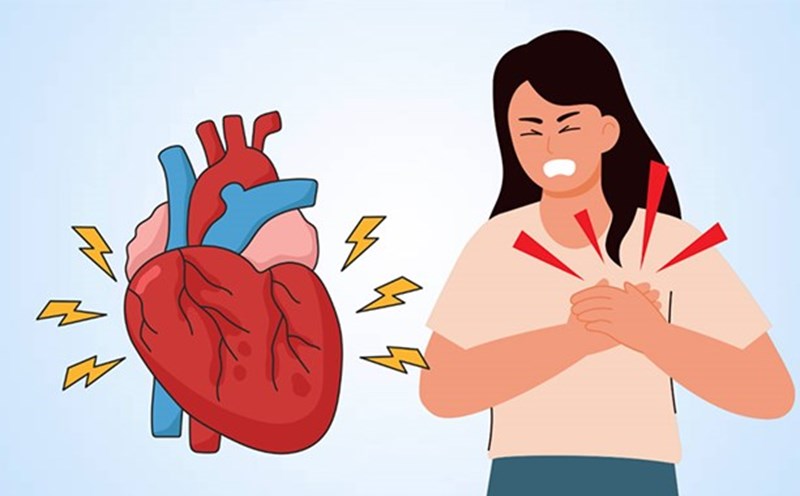High cholesterol, especially low-density lipoprotein (LDL), commonly known as bad cholesterol, can cause many serious health consequences if not detected and treated early. Here are the seven most common and dangerous side effects you need to know:
Coronary artery disease (CAD)
LDL gradually accumulates in the artery walls, creating plaque that clogs the blood flow to the heart, leading to angina and even a sudden heart attack.
High cholesterol does not cause obvious symptoms for long periods of time, but when plaque rupture occurs, the consequences can be a serious heart attack, says Dr Christopher Lee, a cardiologist at the Mayo Clinic, Minnesota.
Localized anemia stroke
Similar to the heart, cerebral blood vessels are also easily affected by plaque. If the blood flow to the brain is blocked, the patient may have a stroke.
Symptoms include slurred face, slurred speech, hemiplegia, sudden loss of vision and imbalance.
Peripheral artery disease (PAD)
High cholesterol causes clogged arteries that supply lower limbs, especially the legs, causing pain when walking, numbness, or even necrosis if not treated.
Long-term leg ulcers may be a sign of PAD.
Penal artery stenosis
When the renal artery is fibrotic, blood filtration function is impaired, causing high blood pressure and kidney damage.
The long-term consequences can be chronic kidney failure that requires dialysis.
Chronic suspensive anemia
The plaque in the intestinal arteries causes abdominal pain after eating, unintentional weight loss and obsession when eating. If not treated promptly, the intestines can be necrotized due to anemia.
High blood pressure
epely arteries due to increased cholesterol increase blood flow obstruction, leading to high blood pressure. This is the main cause of complications with the heart, kidneys and eyes.
High blood pressure and cholesterol are often associated with it, forming a dangerous spiral if not controlled in parallel, warns Dr. Lee.
Xanthomas
This is an visual sign of very high cholesterol, yellow fat appearing in the tendons or eyelids. This condition is often associated with genetic lipid disorders.
What to do when you have high cholesterol?
A simple blood test can diagnose your cholesterol levels. If your LDL index is high, make the following changes:
Eat healthy: reduce saturated fat and refined sugar
Increasing mobilization
Quit smoking and alcohol
Use statins if necessary as prescribed by a doctor
Cholesterol control is an important part of preventing cardiovascular disease. Early detection and timely intervention can save your life," says Dr Colleen Doherty, a internist in Chicago.











